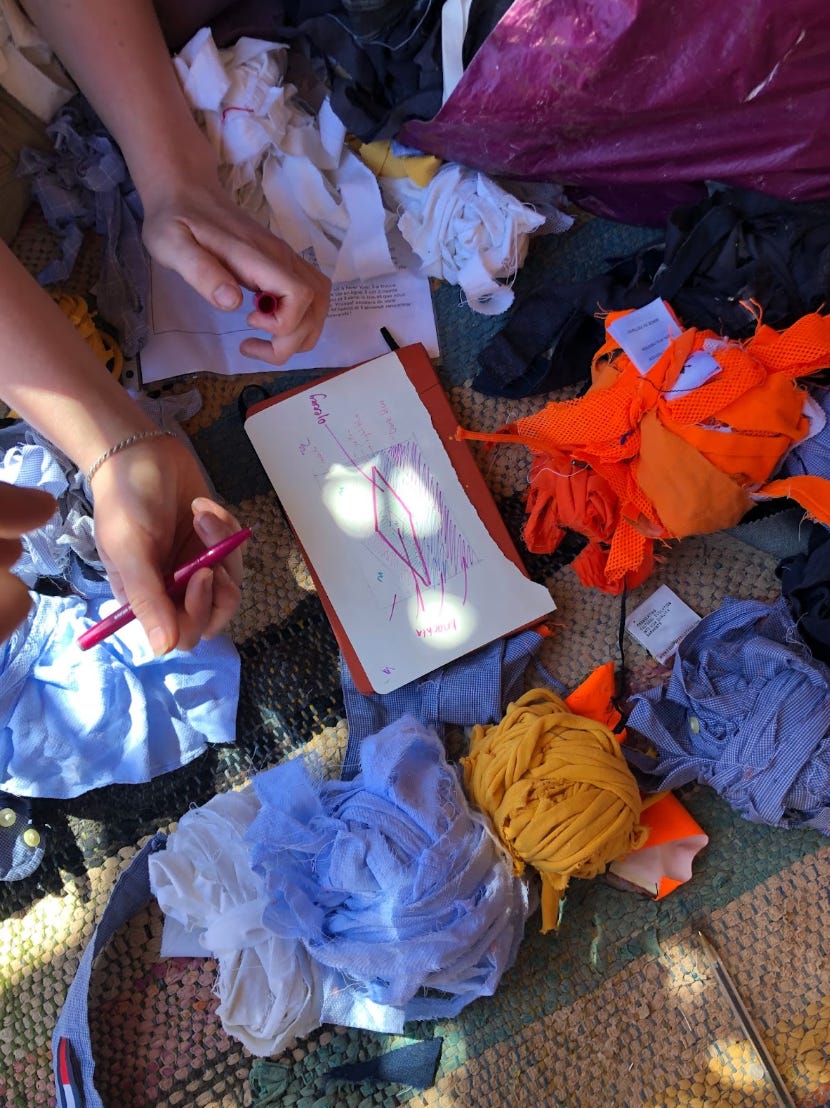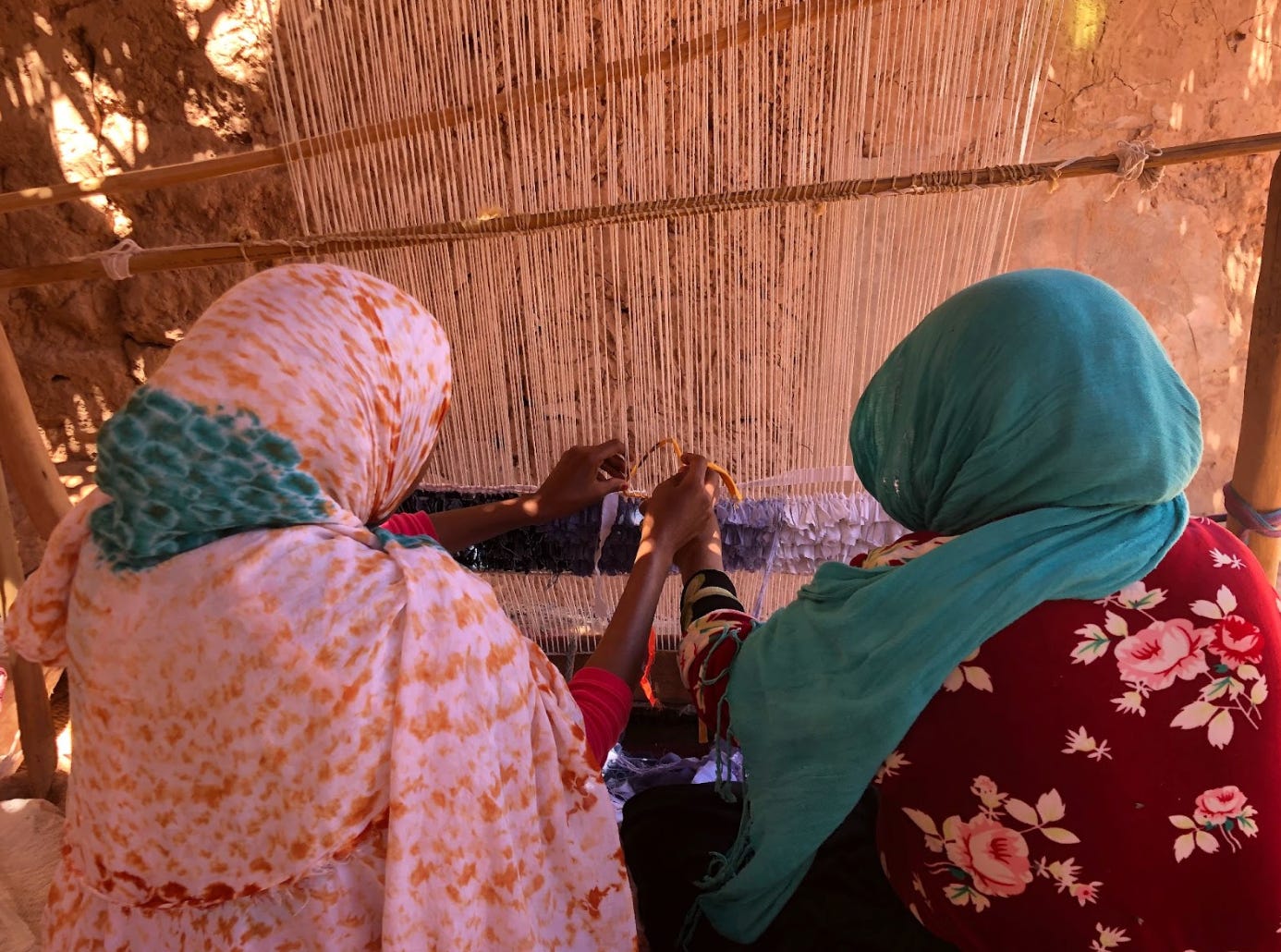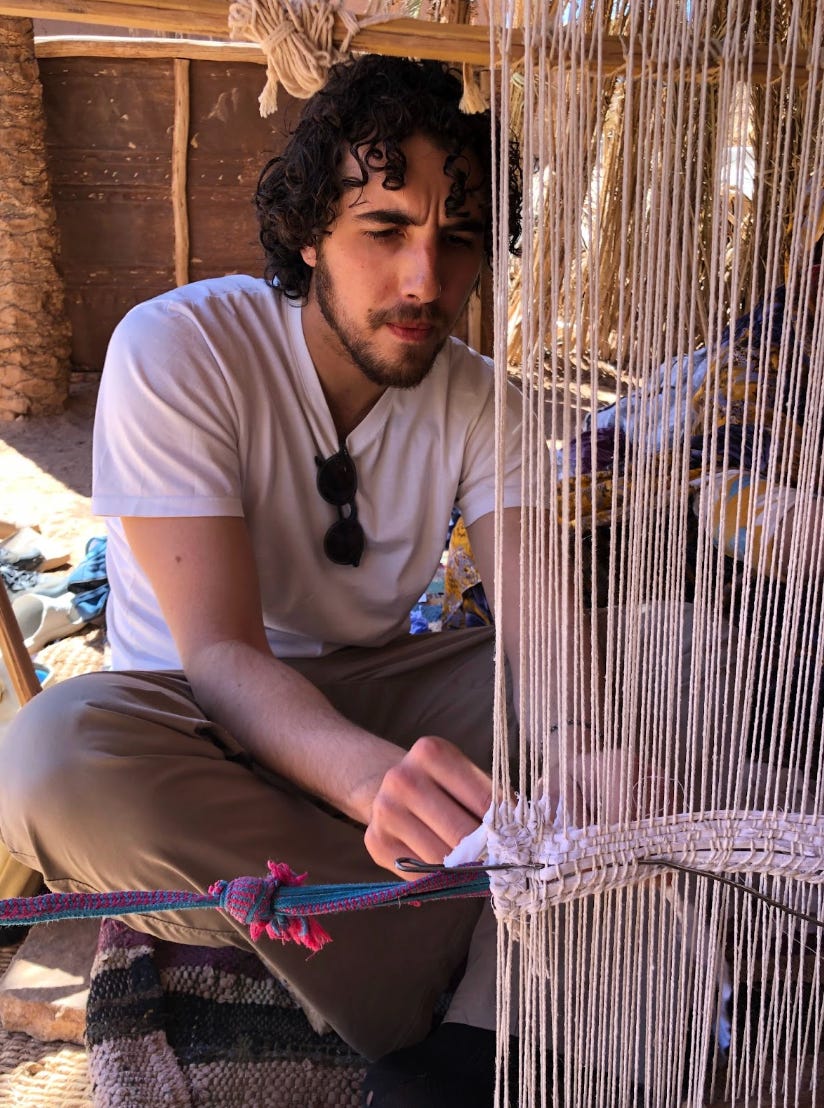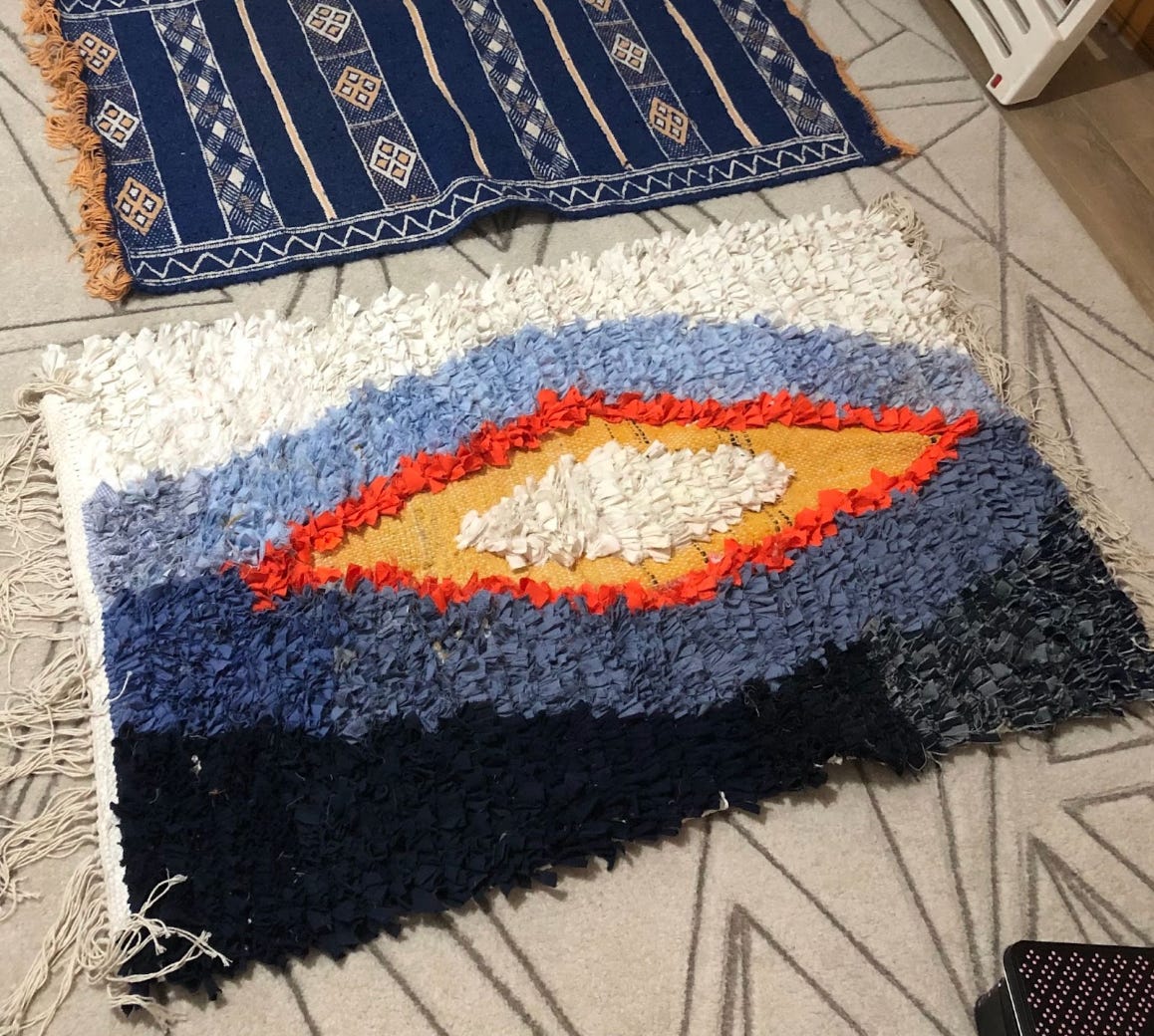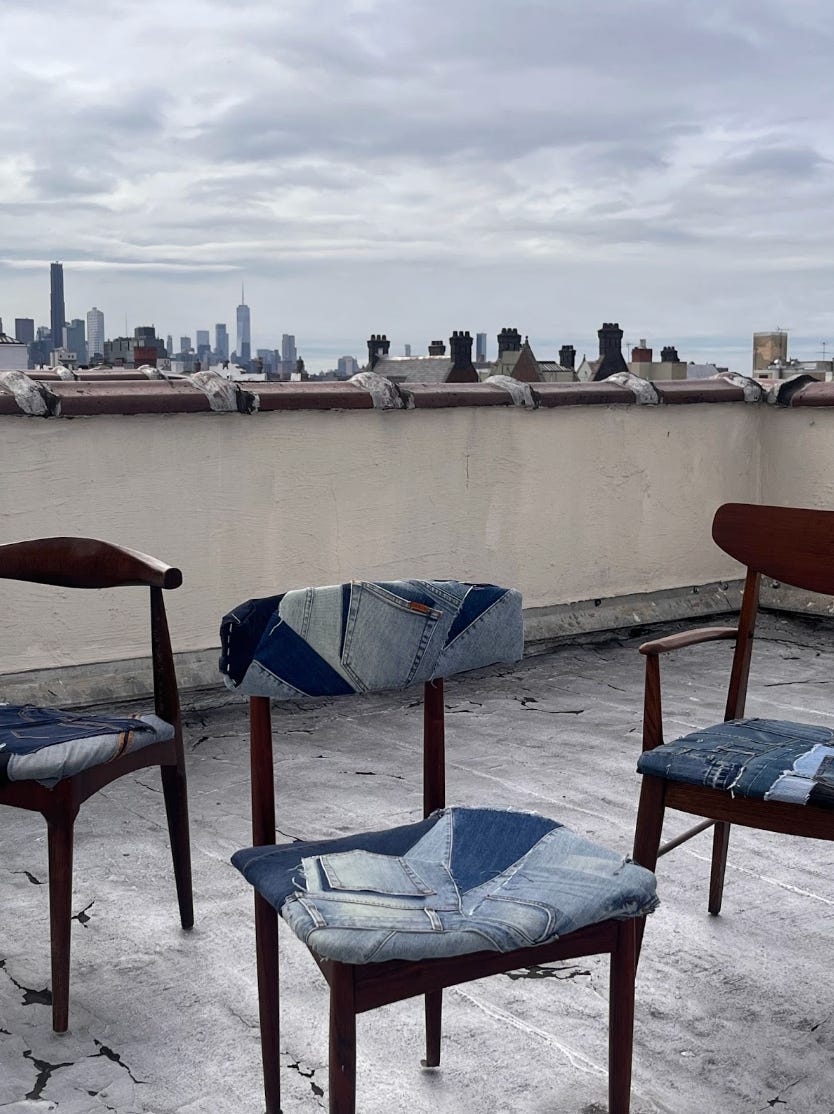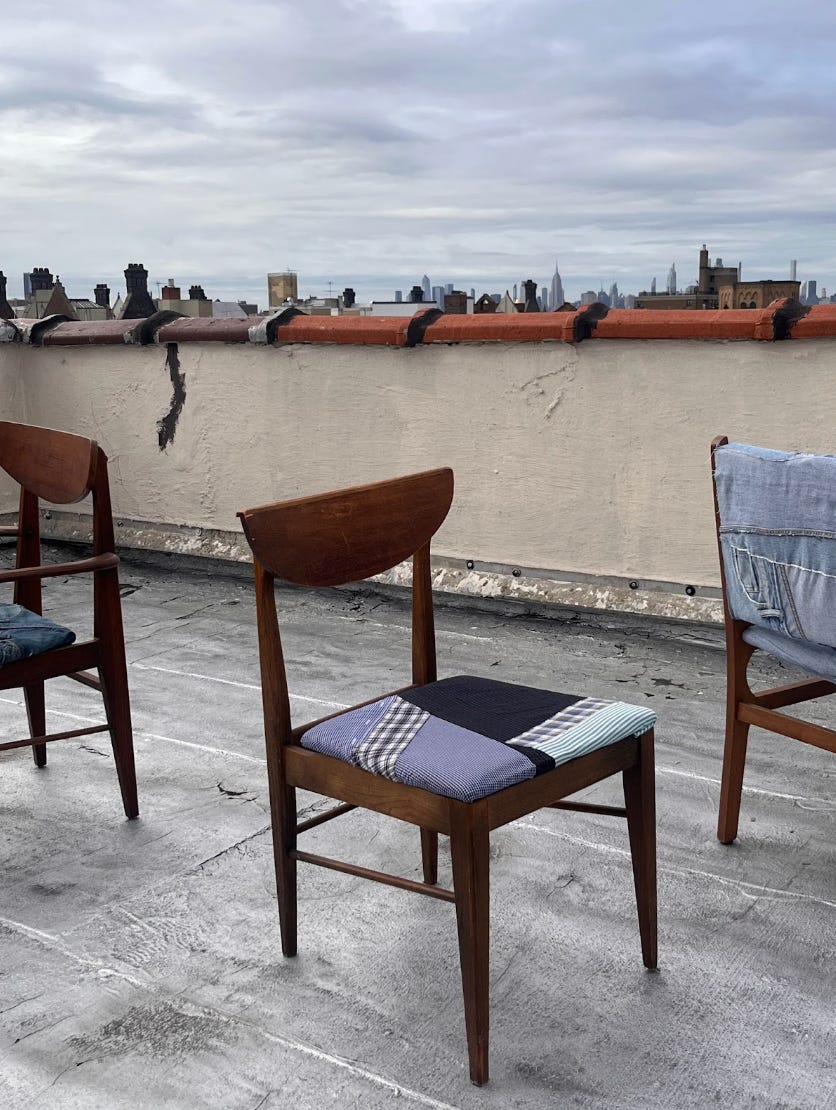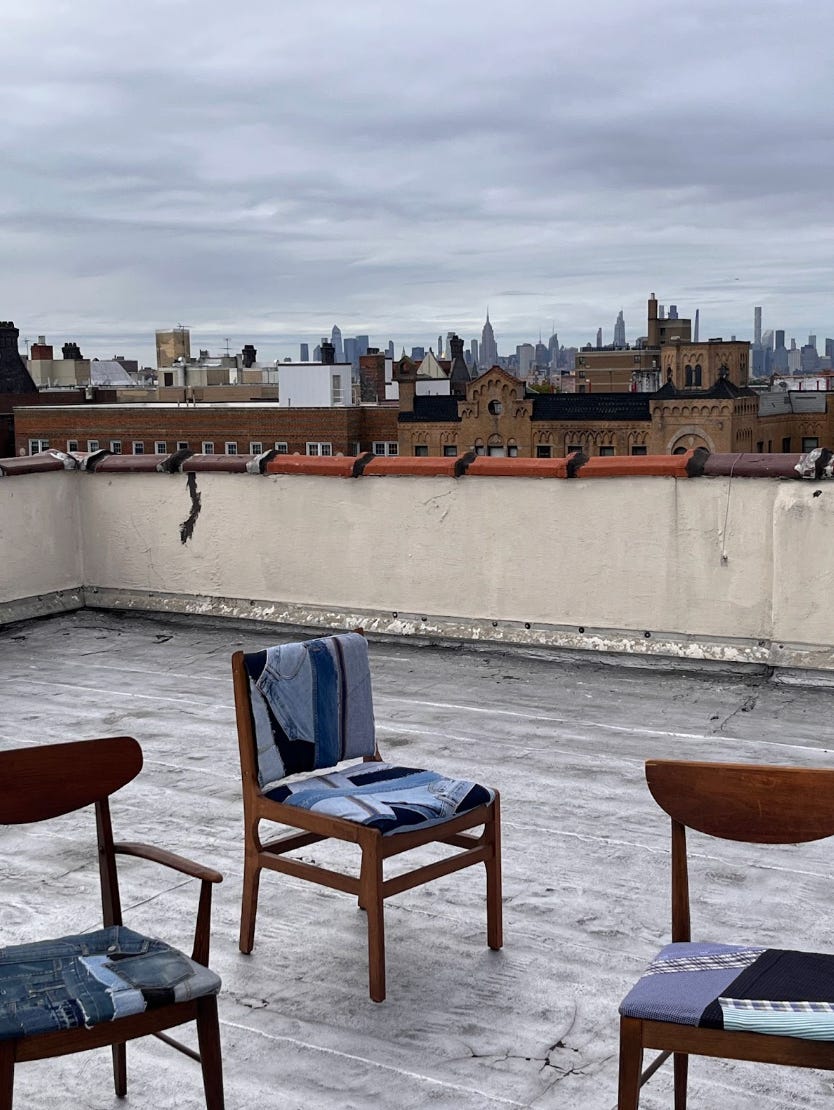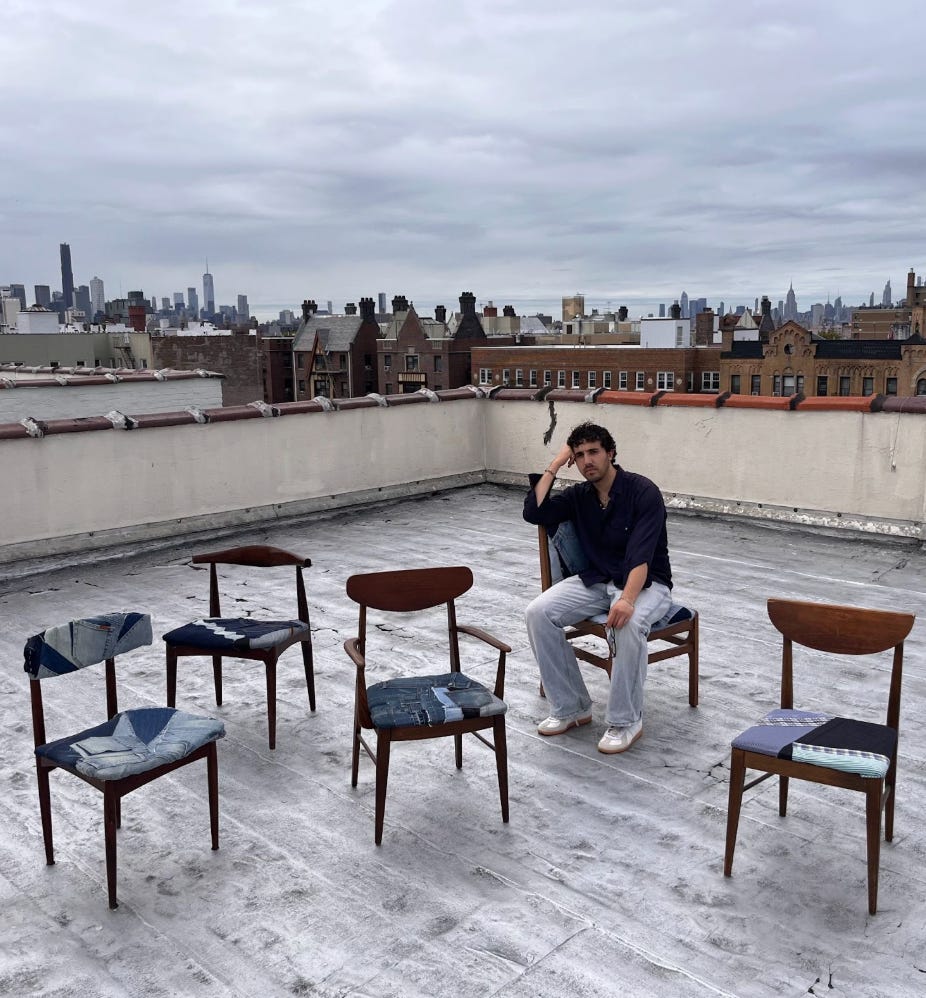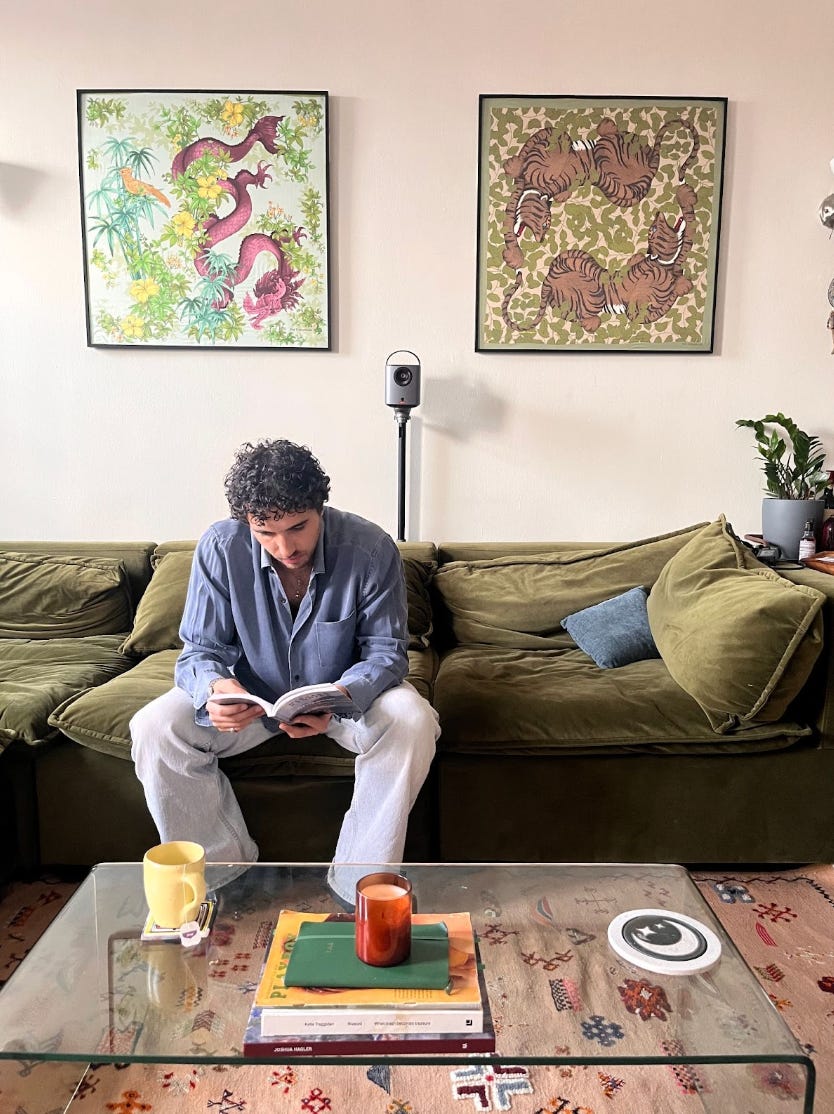Second Lives: An Upcycling Story Woven from Waste
Each project began with scraps and discards, but the result is far more than furniture or fabric.
In my journey with sustainable fashion, one question has always lingered: how can waste be transformed into something of value? How can what we discard become not just useful, but beautiful — an object with emotional weight and a story worth keeping? That question has fueled three upcycling projects, each now proudly displayed throughout my home.
Textiles were my natural starting point. Rugs and carpets, with their durability and artistry, seemed the perfect medium. The connection felt almost inevitable — my family is from Morocco, a country where weaving is heritage. While researching this topic, I discovered Carpet of Life, a social enterprise that turns old textiles into custom boucherouite rugs while providing fair work to rural Moroccan women and artisans too often marginalized in a fragmented supply chain. I immediately knew I wanted to contribute, first through consulting, and then more personally — by patroning my own carpet, sending off a bundle of my worn garments to be reborn as a rug.
Rugs Reborn
Through my consulting work, I knew I had to visit where these rugs are created. So while on a trip to Morocco, I found myself traveling from Marrakech across the desert to the remote village of M'Hamid El Ghizlane, where my carpet was being made. There, surrounded by the warmth of tea, dates, and Moroccan hospitality, I joined the women as they wove my pieces into a new form. My high school “lucky” shirt, and my prom shirt, scraps from my first custom design piece, and the jeans I wore through college — once stained, torn, and unwearable — were transformed into something enduring. Today that rug is more than decoration. It’s part artwork, part heirloom, and a reminder of how memory can be stitched into material.
Boucherouite rugs are made from recycled clothing and textile scraps, known for vibrant, eclectic patterns and free-form, improvisational designs, rather than following traditional symmetry or predictability. My specific rug is designed after a sunset.
Jorts? Meet “Jairs”
My second project began on the streets of Brooklyn. Like many New Yorkers, I’ve stumbled upon abandoned treasures left on sidewalks. One day, I found a mid-century modern chair with elegant lines but a ruined seat. I salvaged it, and thanks to the support of my tailor, reupholstered the cushion with denim from my old jeans. The result was a “jair” – a jean chair that’s full of character — using familiar fabric but for a renewed purpose.
That one piece sparked a new habit. I began seeking out broken, discarded chairs — street finds, forgotten bar seats, neglected marketplace listings — and bringing them back to life with scraps from my own projects. Each finished piece carries the spirit of reinvention: landfill-bound furniture, stitched back into relevance with fabric scraps that once carried my own stories.
Silk Threads
The third project drew from my love of interiors. To me, walls should be layered with textures, not just prints — an eclectic mix that tells a story. I’ve always admired how Hermès and other luxury brands frame trademark scarves as art, elevating fabric to the level of painting. In Bangkok, where my parents live, I discovered a silk shop that sold leftover cuts of patterned Thai silk. Too small for clothing, raw-edged, and irregular, they were otherwise destined to be forgotten. I took them home, finished the edges with the help of my tailor, and framed them myself. Silk is notoriously unforgiving to work with, but the effort was worth it. Now, those framed silks hang as a vivid reminder of travel, family, and the beauty of giving overlooked materials a second life.
Each project began with scraps and discards, but the result is far more than furniture or fabric. They are stories — woven, upholstered, and framed — proof that what we once considered waste can carry both memory and meaning when given the chance.
About the Author: Youssef Elbehri is host and founder of Re.Vert Ventures – an interview series dedicated to founders in the sustainable fashion space.



